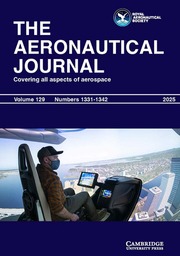No CrossRef data available.
Article contents
Performance reliability and parameter sensitivity analysis of spacecraft separation system combining Monte Carlo and Adaboost regression methods
Published online by Cambridge University Press: 09 September 2025
Abstract
The Monte Carlo methods are frequently employed to evaluate the overall characteristics of non-monotonic, non-linear, non-superpositional performance functions. However, the multi-parameter, multi-objective spacecraft separation dynamics model is not amenable to decoupling to produce a result. This paper presents a parametric objective function that can be sampled. It combines the reliability analysis of the complex non-linear spacecraft separation model with Automated Dynamic Analysis of Mechanical Systems (ADAMS) and uses the Monte Carlo method to obtain the separation performance of the spacecraft separation system reliability profile, that is to say, the distribution of separation performance. The performance distribution of the spacecraft separation system was determined and parameters such as spring separation force, spring line of action, module mass and module centre of mass position were found to have a significant effect on the spacecraft separation dynamics by Adaboost machine learning regression.
Information
- Type
- Research Article
- Information
- Copyright
- © The Author(s), 2025. Published by Cambridge University Press on behalf of Royal Aeronautical Society


